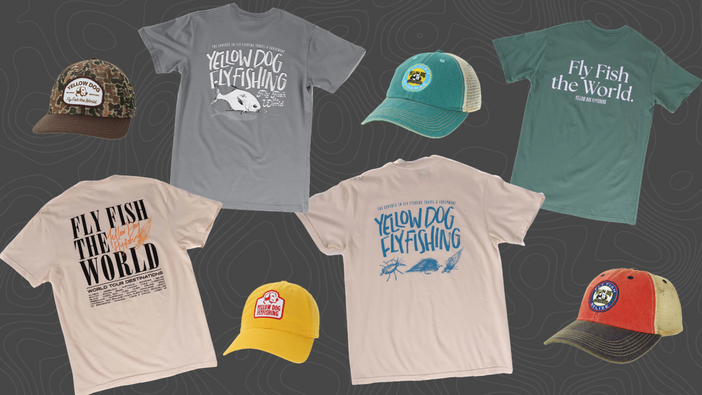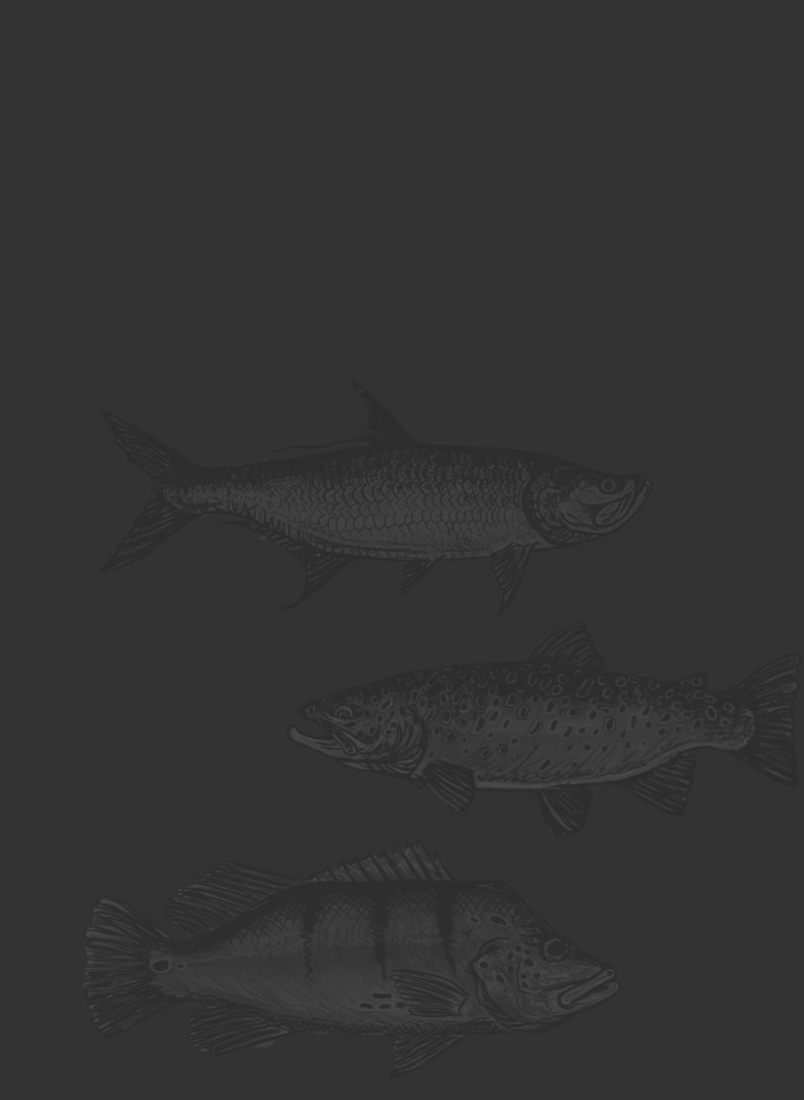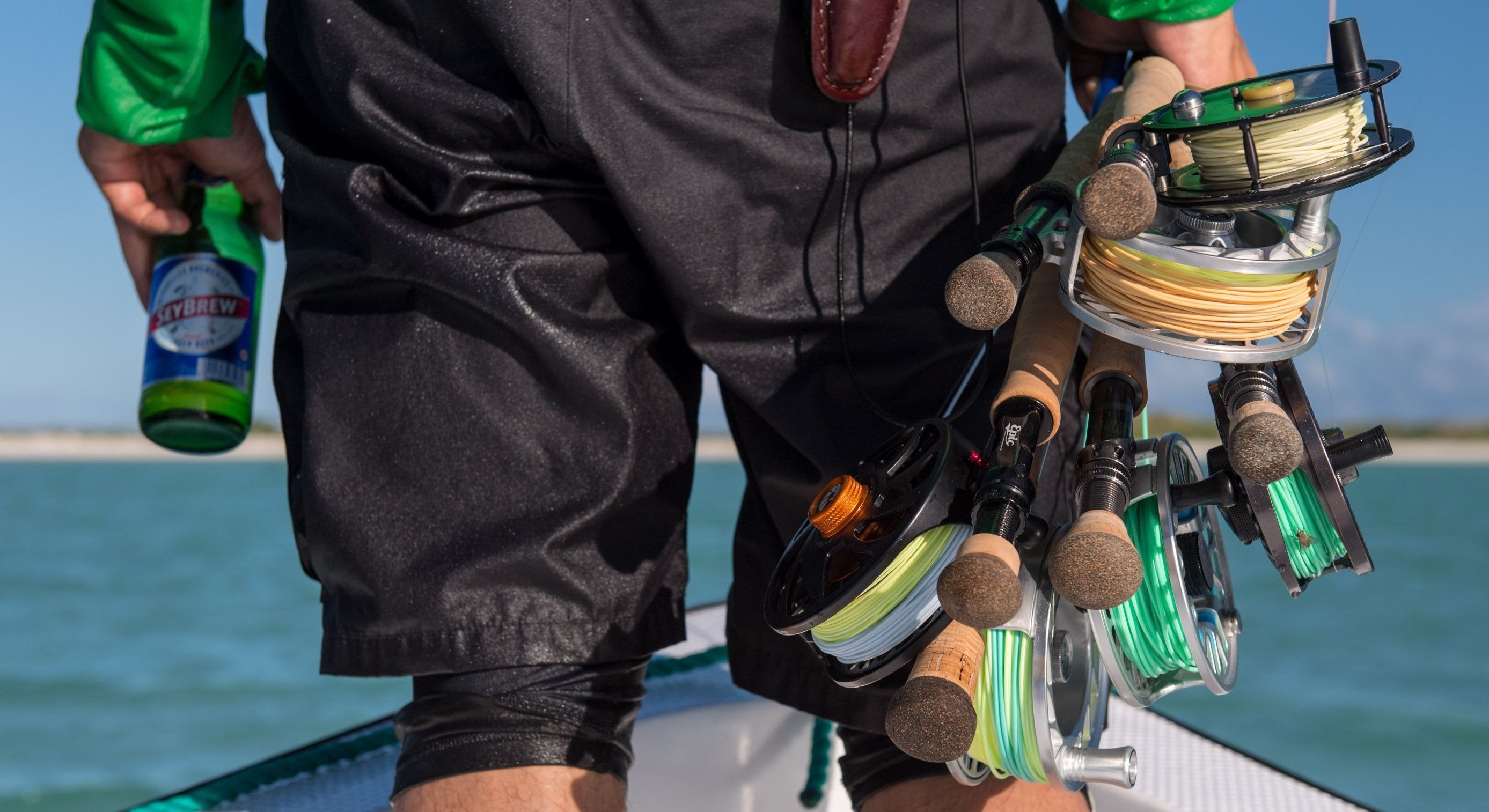Fly fishing has numerous styles and approaches, but perhaps none of them is more spectacular than dry fly fishing: the process of finding rising trout, keying in on their meal of choice, delivering the fly, and the all-mighty slurp of your fly is a magical experience that has turned normal folks into trout bums in an instant. It is well known that stripping streamers may produce bigger fish, and nymphing produces more fish, but the process and reward of dry fly fishing leaves a lasting (if not haunting) impact on most anglers.
Popular around the world, there are a few locations in the United States home to historic and consistent levels of dry fly fishing. Each of these locations offers anglers different approaches, techniques, and entomological diversity; their sheer volume and complexity couldn’t be fished in any angler’s lifetime.
Entomology Basics
Understanding the basics of entomology is the first step in becoming an adept dry fly fisherman. The three most commonly imitated insects are caddis, mayflies, and stoneflies, although there are many more possibilities, such as grasshoppers, cicadas, and damsels.
Aquatic insects go through a natural metamorphosis beginning with eggs laid by a mature insect. The egg then hatches into an immature insect, generally known as nymphs or larva, depending on the species and their specific type of metamorphosis. Subsurface fly fishing, or nymphing, emulates the different stages of these insects. This process makes up the bulk of the insect’s life, sometimes taking years.
As the insect matures under the protection of stones, debris, or river structure, the insect develops its wings for its eventual rise to the surface. Once ready, for surface-emerging species, the insect shucks its exoskeleton, and its wings begin to emerge and rise to the surface. Anglers often target trout with “emerger” patterns as the insect’s wings are nearly mature, targeting these fish just below the surface.
Once on the surface, insects generally dry their wings before flight. Often, these insects unable to fly make for a quick snack for both trout and birds. This mature insect is the bread and butter of dry fly fishing, where anglers emulate the mature insect to entice surface-feeding trout.

Once the insect is able to take flight, there is a short window for accomplishing the most important task of all: reproduction. Depending on the species, this window may be as short as 24 hours. Once a male and female have mated, the female will deposit eggs back on or in the water to begin the cycle over. After mating, both males and females die soon after, falling back to the water as “spinners,” a final and very productive form of dry fly fishing most often done in the evenings or early morning.
Each species of insect has its own complex and diversified process of metamorphosis, with water temperature, time of year, light conditions, habitat, and more all playing a vital role. With that said, this is the process of insect metamorphosis for understanding dry fly fishing in the most basic and generalized terms.
When To Dry Fly Fish
Timing a specific hatch can be difficult given the unpredictable nature of complex ecosystems, but there are some helpful tips for timing your next dry fly fishing adventure. For the purpose of this section, we will focus on the US West, as the hatches in fisheries in the Midwest, Northeast, and Southeast are all going to vary. In the Southern Hemisphere, seasons are opposite to our own, so dry fly fishing takes place during the colder US months–making it a great time to travel to Patagonia!
Spring: This time is tough to predict based on temperatures, snowfall, and the subsequent runoff. With that said, this is a fantastic time to start seeing some bug activity in addition to the ever-abundant midges that get us through the throes of winter. Hatches will be less common at this time, so fishing dries will be more opportunistic than reliable. Baetis, March browns, and the famed Mother’s Day caddis hatch are some of the more reliable hatches, but all depend on conditions.
Summer: This is the peak season for dry fly fishing, despite spring and fall regularly producing some of the best fish. The reason is the number of large insects coming off the water and the frenzy surrounding fabled hatches such as salmon flies and golden stones. In addition, large drakes, PMDs (pale morning duns), tricos, and an abundance of caddis can be found throughout this time of year. More anglers are on the water at this time, so the fish are receiving more pressure, meaning accurate casts, delicate presentations, and the right approach is vital in hooking up.
As late summer rolls around, temperatures are high, and water is generally low. It is important to consider fishing temperatures at this time and focus on tailwaters or high-mountain streams if rivers are running warm. With that said, terrestrial season is in full swing, with grasshoppers, beetles, and ants making up the bulk of an angler’s dry fly box. Large attractor patterns are an incredibly fun way to fish dry flies for both first-time and veteran anglers.

Fall: As the terrestrial season winds down, anglers can generally focus on baetis and caddis patterns. The October caddis hatch is famed throughout the United States and can produce some memorable hatches. Midges, caddis, and BWO (blue-winged olives) will make up the bulk of fall hatches in the US West. As temperatures drop, so does the size of insects, so flies in sizes 16 and smaller are the safest bet.
With winter soon to arrive, brown trout are preparing to spawn, and anglers need to be aware of their potential impact. Redds, or trout spawning beds, are easy to spot as they appear as cleared rock beds on the otherwise dark bottom. If you are unsure, err on the side of caution!
It is possible to dry fly fish in the winter, but timing, water selection, and a bit of good luck are going to play a part. In the early winter, a sunny, warm day may produce a good midge hatch, and anglers should focus on the warmest parts of the day. Winter is a better time for fly tyers to fill their boxes, but if you have to get out and fish, nymphing or streamer fishing will likely be more productive. The bulk of a trout’s diet during this time of year are midges, with colder water making fish lethargic. Most fish won’t be looking up!
Where To Dry Fly Fish
The reality is anglers can dry fly fish just about anywhere. Anywhere trout are found, the bug life that makes up a large portion of their diet is nearby. However, some rivers boast prolific hatches and are storied for their productivity and consistency with dry flies.
The entire US West is practically a dry fly fisherman’s paradise depending on the time of year, with each body of water offering its own unique hatches and approaches. However, Yellow Dog specializes in understanding clients’ wants and needs and is therefore able to direct anglers toward destinations that offer exceptional dry fly fishing.
Montana:
Few places offer the quantity and quality of freshwater fish more than Montana. Home to numerous famous rivers, including the Madison, Yellowstone, Big Hole, Missouri, Bighorn, and many more. There is a reason Yellow Dog’s home office is located in Bozeman, Montana as we have access to some of Montana’s best stretches of water; we could truly fish Montana for the rest of our lives and still have plenty more to discover! While all of these rivers are productive fisheries, our favorite dry fly water in Montana would have to be the Missouri–where spring Skwala stonefly and March brown hatches can be excellent, in addition to a variety of mayfly and caddis hatches. The summer PMD hatch is one of the most popular hatches in all of the state, and one we wouldn’t miss!
+ Top 12 Pale Morning Dun/PMD Flies
Yellow Dog works with lodges throughout the state with varying levels of accommodations and price points to ensure we offer various options for the destination angler. Whether you are traveling with fishing friends, family, or fishing solo, Montana has something for everyone–and annually has some of the finest dry fly fishing in the world. Check out our guide to Montana hatches to assist in your next trip.
+ Listen to this WAYPOINTS Podcast: JAKE WELLS – Planning the Perfect Trip to Montana
Idaho:
Home to many of the world’s most productive trout waters, Idaho is well-known for its dry fly fishing. The Henry’s Fork and South Fork of the Snake are two of these, and Yellow Dog works with lodges such as Henry’s Fork Lodge, Elk Creek Ranch, South Fork Lodge, and The Lodge at Palisades Creek. The Henry’s Fork is cemented in the lore of dry fly fishing purists and a must for any committed dry fly enthusiast.
In addition, anglers can opt for one of the best float trips Yellow Dog offers: The Middle Fork of the Salmon River, a fishery famous for its native cutthroat and their willingness to eat a well-placed dry fly!

Wyoming:
Famous for both the Yellowstone and the Grand Teton, Wyoming also carries the title of the least populated state in the US. That means far less angling pressure than its neighbors in Montana and Idaho but plenty of fantastic water.
The headwaters of the Yellowstone and Bighorn are in Wyoming, in addition to well-known rivers such as the North Platte, the Wind, and the Snake. There is an abundance of water to choose from and fewer anglers to pressure it. Our lodge partners in Wyoming offer fantastic options for families or couples traveling out west and exemplary options for your next dry fly destination.
When fishing any of these destinations, consult with the local fly shop on patterns, as well as our tips to choose the best dry fly pattern.

International Destinations:
Patagonia:
The Patagonia fisheries in Chile and Argentina are often described as “what Montana was like fifty years ago.” Conservation, low angling pressure, and an abundance of fish have combined to make this a trophy destination for dry fly fishermen. Streamer fishing and nymphing are also quite productive depending on conditions, but the highlight of Patagonia fishing is casting large attractor patterns to willing fish.
Anglers can tailor their trip to wading or drifting with some of the world’s most experienced and proficient guides. Accommodations are fantastic given the remote nature of Patagonia and make for an exhilarating and comfortable adventure.
Check out our Ultimate Guide to Fishing Chile and Ultimate Guide to Fishing Argentina to learn more!

New Zealand:
Trout are not endemic to New Zealand, but since their introduction in the 19th century, they have thrived in the rivers and streams of the small island country. New Zealand’s fishery is a dry fly fisherman’s paradise, providing experienced anglers with the opportunity to target trophy brown and rainbow trout.
New Zealand is not the best option for novice dry fly fishermen. Moderate to gin-clear water means finding and stalking fish, delicate presentations, hiding behind barriers, and a single shot for most specimens. However, our lodge partners here are experienced guides who can ensure you have the best experience possible, in addition to fantastic accommodations.
While brown and rainbow trout did not evolve within New Zealand’s boundaries, it feels like the place is a virtual paradise for technical, dry-or-die fly fishing anglers. The rolling landscapes and emerald streams of New Zealand make this one of the most beautiful places in the world to fish.

Gear for Dry Fly Fishing
To only complicate matters further, your gear can vary depending on the scenario. A 9-foot, 5-weight is your go-to for most of the US West. However, a 4-weight would work well in most casting scenarios, while a 6-weight would be great for casting large dry flies on larger water. For smaller water and small flies (size 16-20), a 3-weight can bring anglers a ton of fun but can lead to trouble if you hook up to a larger fish.
In small creek settings or areas with an abundance of overhang, a shorter rod helps prevent hangups or ensure anglers have enough casting space. Finding rising fish in tight spaces is one of the most enjoyable methods of dry fly fishing, requiring anglers to be stealthy, accurate, and sometimes imaginative with their casting.
Generally, at least a 9-foot, 4x-5x tapered leader will work well–a good rule of thumb is the larger the fly, the larger the tippet to ensure the leader can turn over properly. In big river conditions with faster flows, a thicker tippet won’t be nearly as impactful on “spooking” fish and might be the difference in landing the big one! In slow water, a longer, thinner leader may be necessary, so having a range of 3x-6x tippet is always encouraged.

Dry fly fishing is a rabbit hole for many anglers who welcome the challenge of tempting a trout to rise. While there are times that dry fly fishing can be more productive, it is generally less efficient than nymphing and new anglers should keep that in mind. However, there is little else like it, and every angler should have the techniques, flies, and knowledge in their bag to ensure they are prepared to take advantage of a hatch. If you’re looking to plan your next adventure, give us a call at Yellow Dog to see how we can make your dry-fly dreams come true.
Related Articles:





























